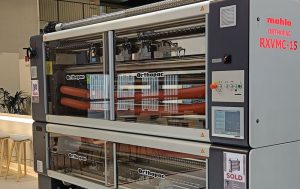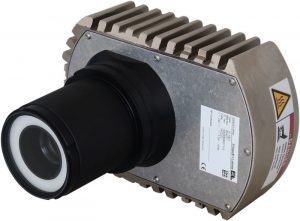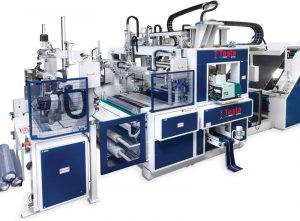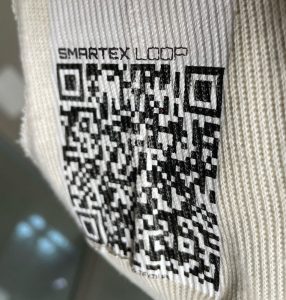
Part II of a two-part feature reviewing improved tests for fabric performance along with automated inspection and digitalization technologies that reduce product defects and waste to help improve the textile supply chain.
By Dr. Kavita Mathur
In the January/February 2024 issue of Textile World, Part I of “Innovations In Testing & Quality Control” focused on fiber and yarn measurement, and fabric performance testing. Part II delves into color measurement and communication, tactile measurement, and quality control measurement technologies.
Color Measurement And Communication
Grand Rapids, Mich.-based X-Rite Inc. (Pantone) offers solutions for color specification and communication, color formulation for textile dyeing, production and quality control, and visual assessment. The company presented its industry-leading color measurement solutions for all aspects of the workflow on a variety of textile materials and applications. For color specification, there was the Ci7860 Sphere Benchtop Spectrophotometer, an instrument for digital color standard generation that provides measurement flexibility with switchable reflectance and optional transmission apertures, and the Color iQC, a feature-rich quality control software that monitors color from specification to material suppliers to manufacturing and assembly. For color formulation for textile dyeing, the Color iMatch software accurately identifies recipes containing the most likely dye combinations using proprietary search metrics and provides tools to optimize and improve existing legacy color data from a variety of systems. For production and quality control, the company presented its MetaVue VS3200, a non-contact imaging spectrophotometer used to measure color on multicolored fabric samples to quantify the true color and ensure design intent is achieved on wet and dry paints, plastics, cosmetics, and small and odd-shaped samples. For visual assessment, the company offers the SpectraLight QC light booth to assess large samples and evaluate special effects under all relevant lighting conditions. The booth includes seven different light sources, including a dimmable filtered-tungsten halogen daylight and an optional LED.
England-based VeriVide Ltd. launched three new products — UltraView and VisionView, both all-LED light booths; and OmniStretch, a fabric opacity assessment tool. UltraView brings a range of sustainable new benefits to designers, mills and brands; and is configured with all-LED tunable calibrated light sources as standard including CIE D65, CIE D50, L40-8, L35-8, L30-8, L31-9, CIE illuminant A, and UV. As the light is tunable, suppliers can avoid purchasing multiple light cabinets and the LEDs eliminate the need for the regular bulb changes necessary with fluorescents, providing significant energy savings. The UltraView incorporates the company’s A rated CIE D65 and CIE D50 artificial daylight light sources while being fully tunable for recalibration to the individual requirements of each customer.
VeriVide’s VisionView product includes a DigiEye viewing station for non-contact color measurement and digital imaging. It allows for visual and digital color assessment by combining both visual and digital color workflows in a single light booth. DigiEye overcomes the limitations of spectrophotometers, which are limited to products with a solid color appearance. Normally, spectrophotometers can only measure “average” color, assessing only the area of the fabric exposed in the instrument’s aperture. Additional limitations arise if the product has multicolored characteristics or appearance, an uneven or inconsistent surface, a color area too small to be captured by the instrument or any kind of surface effect, for example carpet pile or the sheen of satin and silk.
The company’s OmniStretch enables stretch-based opacity assessment of knitted fabrics, across different stretch levels. Two assessment plates are included with the product, which enables grading the translucency of fabrics and assesses “grinning” associated with undyed elastane to guarantee the product is squat proof.
Thousand Lights Lighting (Changzhou) Ltd. (Thouslite), China, exhibited its multi-channel LED lighting technology. The company emphasized its concept of Total Appearance for communication and reproduction of color using the LED-Simulator. This digital communication platform with cabinet aims to shorten the design cycle and eliminate wasteful sampling. It allows reproducibility of color, texture, gloss and translucency. The LEDSimulator features the LEDView cabinet and the ColorWay color design software. It is a powerful tool for communicating Total Appearance throughout the supply chain, allowing color to be visualized on a wide range of textures and matched between virtual and real samples. The system has a viewing cabinet that includes the standard CIE illuminants D50, D65 and D75 to reproduce any phase of daylight in terms of Color Rendering Index (CIE Ra) 99 and Metamerism Index (MI) Grade A.
Lawrenceville, N.J.-based Datacolor offers a series of color management tools and software, including benchtop and portable spectrophotometers, color lab dispensing systems for visual evaluation and multiple color management software applications. At ITMA, the company focused on providing insights and best practices on color solutions with guests, and Datacolor speakers gave presentations and spoke on a range of topics. Particular attention was given to its new product CloudQC, a cloud-based quality control software to manage, evaluate and share QTX files for fast color approval, to work remotely or from different office locations and eliminate time-consuming and costly evaluation of physical samples between manufacturers and customers.
Italy-based Barbieri Electronic’s competencies center on intelligent instruments such as spectrophotometers and color measuring instruments to enable accurate and consistent color reproduction on almost any kind of media. At ITMA, the company showcased its award-winning spectrophotometer Spectro LFP qb Textile edition. The instrument is a fully automated reflection/transmission spectrophotometer for color management in dye-sublimation and direct-to-garment printing. It has a dedicated software and accessories including a special textile holder for easy and secure fixation of fabrics for measurements. Many textiles —such as cotton, silk, polyester, viscose, wool, linen and mixed fabrics — can be automatically measured. The spectrophotometer comes with an air blowing system to prevent textile fibers from contaminating the optics.
Tactile Measurement
Testing device manufacturer Emtec Electronic GmbH, Germany, showcased the new features of its Tactile Sensation Analyzer (TSA). Originating in the tissue paper industry under the name Tissue Softness Analyzer, the TSA has since become an established industry standard for haptic measurement worldwide. This is a redesigned model that has been adapted to meet the specific needs of the textile and nonwovens industry. Some of the needs of the industry include assigning an objective number to the way a fabric subjectively feels to the touch. The TSA measures the three basic parameters that determine the human hand feeling — the real softness, which comes from the fiber stiffness; the roughness, which comes from the surface profile of the sample; and the stiffness, which is determined by the fiber behavior, the production technology and chemicals. The availability of these three basic parameters— roughness/smoothness, real softness and stiffness/deformation —allows the use of the device in various application areas.
The TSA already offers a unique approach to softness measurement by simulating the sensory capacities of the human hand via sound analysis. Haptic parameters such as softness, smoothness, flexibility, deformation and springback behavior can be objectively measured and the results digitized within a fraction of the time needed for traditional hand-panel testing methods — 90 seconds is standard. The digitized results can be searched and reproduced from anywhere in the world. This is done via a new cloud-based haptic library by the updated TSA. The company says that especially for garments there is a strong need to quickly and reliably reproduce certain haptic qualities that consumers prefer.
Thermetrics LLC introduced Liz, a full-body thermal manikin for clothing and environmental testing on the female form. The Seattle-based company uses Liz for testing women’s performancewear. Featur-ing 30 independent thermal zones and with a maximum power output of 700 Watt per square meter, the manikin — at 5 feet, 5 inches (167 centimeters) in height — provides realistic garment properties and ther-mal comfort data, more applicable to the actual end-user. The product is useful for companies developing per-formance wear or protective apparel for women or for institutions that establish worker safety guidelines.
In addition to its line of fabric performance and testing mentioned in part I, Roaches International chose ITMA 2023 as the ideal platform to launch its highly anticipated Sentire product line for measuring finished fabric tactile properties. To provide customers with a better understanding of how specific garments will feel and perform, since 2020 the company has been developing its performance haptics tester in collaboration with Leeds University, based on the Leeds University Fabric Handle Evaluation System (LUFHES). The product works by placing fabric samples into LUFHES, which then runs a series of tests to generate quantitative fabric tactile properties. This is akin to a fingerprint for the fabric, which can then be communicated digitally to partners in different locations and compared against other samples.

Quality Control Measurement
Germany-based Erhardt+Leimer presented novel products in the area of inspection technology including the ELSEAMTEX SI 1001 seam sensor for detecting cross seams, and the Elmeta MDA 1005/1006 metal detector that can be used to optimize production processes and make them safer.
The Elseamtex SI 1001 seam sensor detects optically, and therefore without contact, any type of seam on printed or single-color fabrics. Especially when there are large differences in thickness, such as with carpets and towels, no adjustment work is necessary. Software based on artificial intelligence makes it possible for the first time to detect cross-seams at the level of human perception. Along with a light transmitter and a matrix camera with lens, the sensor also includes a WLAN card for reliable communication with a smartphone, tablet or any other mobile terminal device. A dedicated app is also available. Special seams can be tested or defined offline. If a cross-seam is detected, a digital output in the sensor is switched so that for example the calendar rollers can be opened, the shearing blade raised briefly, or the seam left to run through the digital printing press without printing.
During the production of textiles, small metal particles find their way into the web due to the various processing steps. If these particles are not all detected, extremely costly damage may occur on the downstream calendar rollers and shearing tools. In addition, there is also a risk of catalytic reactions in wet finishing. As a result, whole web sections are often converted into scrap. The metal detector Elmeta MDA 1005/1006 reliably and accurately detects the smallest metal particles over the entire width of the web at production speeds from 2 to 500 meters per minute (m/min). For each segment — 300 millimeters — a signal LED on the sensor indicates the position of the metal particle in the web. The metal detector can be used for dry and damp web textiles, nonwoven fabrics and carpets.
China-based Suntech Textile Machinery invited its customers to learn about its latest artificial intelligence (AI) fabric inspection technology at its booth at ITMA. The company offers a large range of textile equipment, but highlighted the AI Automated Visual Inspection System (ST-Thinkor). The ST-Thinkor can be incorporated into many types of fabric inspection machines. The system is designed to help textile manufacturers automate the textile inspection process and keep them focused on quality. The ST-Thinkor provides automatic defect marking, automatic linear fabric end-cutter, 24 hours unmanned operation in the inspection section and high efficiency, at production speeds of up to 60 m/min. With AI deep learning, precision detection is also highly improved as well.

Italy-based Testa Group S.r.l. specializes in machines for inspection, cutting and packaging to help reduce fabric waste. Testa Group’s systems allow customers to have machines able to work with all types of fabrics, from elastic ones and denim, to all ranges of technical materials. At its ITMA 2023 booth, the company presented its SuperTestaRossa model, an automatic cutting and packing machine. A high-performance machine, it is equipped with some significant technical innovations. The inspection and cutting process consist of a first phase fabric inspection with no cuts, followed by a cutting optimization that takes into account a mapping of the defects of the fabric batch and then establishing a cutting execution plan performed according to the capabilities of the cutting machine. This optimized management of the inspection and cutting phases, improves quality control and reduces the amount of production waste and the number of machines involved in the process of roll packaging.
Germany-based Mahlo GmbH & Co. KG — with an offering focused on in-line measurement, control and automation solutions for continuous processes in textile manufacturing —presented its latest developments for process optimization. The company has a modular system architecture with a wide variety of sensors, which allows its customers to optimize their production sustainably with individualized solutions that allow for measuring critical material properties such as thickness, weight, density, moisture, and temperature. For distortion detection and correction, the company showcased its new Orthopac RXVMC straightening concept, which was presented for the first time in Milan and that can remove distortions in textile fabric webs even faster and more precisely than other systems. The company’s Patcontrol PCS for pattern recognition and the Famacont PMC for controlling weft and stitch course density were also on display. Both systems help producers maintain the residual shrinkage values they guarantee in their products. Mahlo also presented its continuously developed digital smart data environment mSmart. This allows historical data to be used to optimize processes and eliminate weak points.

Smartex, Portugal, which originally developed its Smartex CORE, an AI-enabled automated quality control product, presented the Smartex LOOP fabric roll level traceability tool. Smartex LOOP enables suppliers to take advantage of fabric-roll level data collection as well as directly address the call from fashion brands for better supply chain data. This solution represents a significant advancement to revolutionize supply chain communication for the modern textile factory. Users can quickly scan any fabric roll’s information or review all of their rolls on the Smartex Platform via their desktop or mobile and instantly access a wealth of information about that roll’s production history and quality. Smartex LOOP allows factories to pinpoint fabric roll issues, identifying the exact machine, worker or yarn supplier involved. Smartex LOOP provides irrefutable evidence of product quality through a digital roll map, to prevent supply chain disputes.
England-based Shelton Machines Ltd. (Shelton Vision) provides automated surface inspection systems using machine vision to help reduce waste in many applications within the textile and apparel industries. The company presented a new fabric inspection technique for accurately detecting the most subtle defects on patterned fabrics during high-speed production. Fully validated and already in use on industrial installations, this patent-pending system has been integrated into the company’s WebSpector platform. The Shelton WebSpector machine vision system offers automated defect detection of more than 97 percent, while traditional methods for defect detection that rely on human inspection have detection rates under 65 percent. The WebSpector system has been until now restricted to plain textiles, but now the company has developed template-matching techniques for the resolution of complex pattern deformations. This allows the system to detect defects in the pattern as well as underlying defects.
Supply Chain Improvements
ITMA 2023 in Milan included a good number of innovations in testing and quality control, and provided an excellent platform to assess the future direction of the textile industry in this area, which builds expectations for the next ITMA in Hanover in 2027. Advances in QC and testing technologies have a significant effect on standardization and improve today’s textile supply chain. Test methods and standards also are in constant development. In today’s textile manufacturing environment, testing and QC are at the center of meeting tight specifications required to satisfy the performance and quality expectations of consumers.
By reducing product defects, automating inspection via digitalization and improving tests for fabric performance, the QC and testing machinery showcased will surely help with energy, water and other resource optimization for textile manufacturing. Inline process controls, sensors and simulation systems will take textile manufacturing, dyeing and finishing beyond the current realm of the black-box of trial-and-error. QC and improved testing will also help with the ultimate goal of replacing the fossil resources that heavily dominate today’s textile industry. Human-assisted or semi-autonomous AI systems already are helping predict and optimize manufacturability, material compositions and physical parameters, minimize production resource footprint and provide data for traceability, reporting and certification requirements.
Editor’s Note: Dr. Kavita Mathur is an associate professor in the department of Textile and Apparel, Technology and Management, at Raleigh, N.C.-based NC State’s Wilson College of Textiles. This article was adapted for Textile World from a paper by Dr. Mathur published in the NC State Wilson College of Textiles’ Journal of Textile and Apparel, Technology and Manage-ment (JTATM). Part I of this article appeared in the January/February 2024 issue of TW.
March/April 2024




